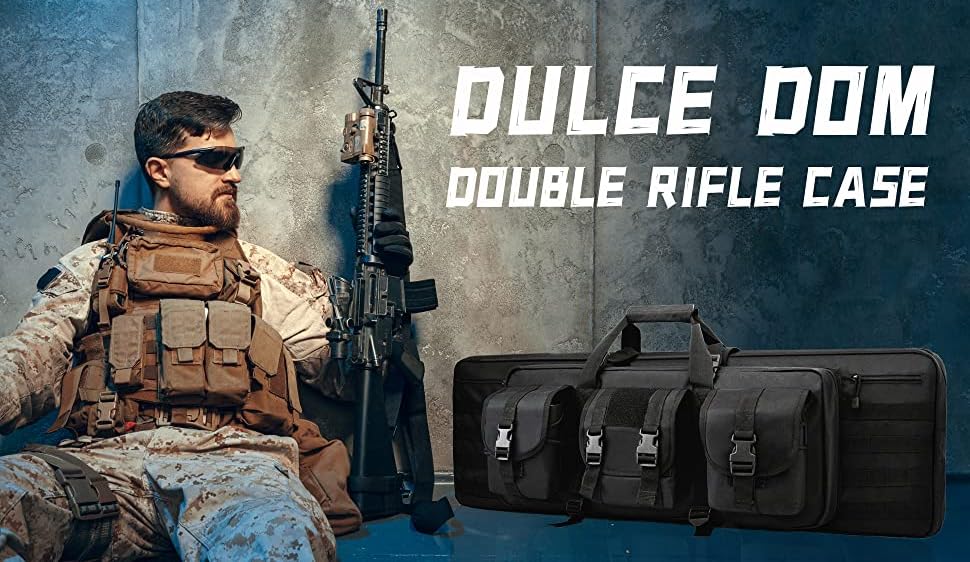
As a gun owner, how you store your firearms in gun cases matters more than you might think. Have you considered whether to store your guns standing up or lying down within their cases? This choice affects your guns' lifespan, your safety, and your space usage. Proper storage in well-designed gun cases can prevent wear on your firearms, keep them secure, and make the most of your available room. Whether you have a large collection or just a few pieces, the way you arrange your guns in their cases is important. The following sections explore how choosing between vertical and horizontal storage in gun cases can impact your firearms and your gun room setup.
Why Proper Gun Storage Matters
Storing guns correctly in suitable cases is crucial. Good gun cases, whether vertical or horizontal, shield firearms from humidity, dust, and accidental damage, offering better protection than basic safes or cabinets. This proper storage is key to preventing accidents, keeping guns away from children and unauthorized users, which significantly reduces the risk of mishaps at home.
Smart storage solutions help gun owners manage space efficiently, allowing more firearms to fit in less area. This is particularly useful for those with growing collections or limited space. The choice between vertical and horizontal cases can greatly affect how well you can organize your firearms.
Gun owners often need to balance quick access for emergencies with strong security against theft. Your storage method should address both these needs, especially for home defense weapons. The right combination of case type and storage orientation can help achieve this balance.
Lastly, proper storage helps maintain your guns' condition and value over time. By considering all these factors – protection, safety, space management, accessibility, and preservation – you can choose the best vertical or horizontal storage solution for your needs, ensuring your firearms remain safe, accessible, and in good condition.
Vertical Gun Storage: Pros and Cons
Vertical gun storage in specialized gun cases is a popular choice among firearm owners, offering distinct advantages alongside some potential drawbacks.
Benefits of Standing Your Guns Up
1. Space-Saving Solution
Vertical storage can be a game-changer for those with limited room. By standing your guns up, you use less floor space, making it ideal for narrow closets or small safes. This method allows you to store more firearms in a compact area, maximizing your available space.
2. Easy Organization and Access
When guns are stored vertically, it's often easier to see and identify each firearm at a glance. This arrangement can make selecting the right gun quicker and simpler. For collectors who enjoy displaying their firearms, vertical storage offers a visually appealing way to showcase different models.
3. Ideal for Long Guns
Rifles and shotguns, with their longer barrels, are particularly well-suited to vertical storage in gun cases. This position can prevent unnecessary stress on the stock and helps maintain the gun's natural balance.
Potential Drawbacks to Consider
1. Risk of Tipping
Vertical storage comes with a risk of guns tipping over, especially if not properly secured. A falling firearm can lead to damage or, worse, accidental discharge. Ensuring stable, secure mounts or racks is crucial for safe vertical storage.
2. Stress on Certain Components
Some gun experts worry that long-term vertical storage might stress certain firearm parts. For instance, the weight of the gun resting on its buttstock over time could potentially cause wear or deformation, particularly in older or more delicate firearms.
3. Dust Accumulation
Vertical storage may allow dust to settle more easily in the barrel or action of the firearm. While not a major issue with proper maintenance, it's something to keep in mind when choosing your storage method.
Horizontal Gun Storage: Advantages and Challenges
Storing guns lying down in gun cases is another common method. Here's why some gun owners prefer this approach and what potential issues they might face.
Benefits of Laying Your Guns Down
1. Even Weight Distribution
Horizontal storage distributes a gun's weight along its entire length. This can be particularly beneficial for heavier firearms or those with delicate components. By avoiding concentrated pressure on any one part, horizontal storage may help prevent long-term wear or deformation.
2. Stability and Safety
Guns stored horizontally are less likely to fall or be knocked over accidentally. This added stability can be crucial in preventing damage to the firearm or potential safety hazards. It's especially important in households with children or in areas prone to earthquakes or other disturbances.
3. Protection from Dust
When stored horizontally, a gun's barrel and action are less exposed to falling dust and debris. This can help keep these crucial areas cleaner for longer periods, potentially reducing the frequency of necessary cleaning and maintenance.
Potential Drawbacks to Consider
1. Space Requirements
Horizontal storage generally requires more floor or shelf space than vertical storage. This can be a significant drawback for gun owners with large collections or limited storage areas. It may necessitate larger gun safes or storage furniture, which can be costly and take up more room.
2. Accessibility Issues
Retrieving a specific firearm from a horizontal stack can be more challenging and time-consuming. This might be inconvenient for collectors who frequently handle their guns or problematic in situations requiring quick access, such as home defense scenarios.
3. Risk of Barrel Droop
For some long guns, especially those with heavy barrels, prolonged horizontal storage might lead to a condition called "barrel droop." Over time, gravity can cause the barrel to bend slightly, potentially affecting the firearm's accuracy and performance.
Vertical vs Horizontal Gun Storage: A Practical Comparison
When choosing how to store your firearms, it's crucial to understand the differences between vertical and horizontal methods.
Making the Most of Your Space
Vertical storage shines when it comes to maximizing floor space. You can fit more guns in a smaller area, making it perfect for tight spots or compact safes. However, you might need taller storage units or rooms with higher ceilings. On the other hand, horizontal storage typically needs more floor or shelf space. It works well in wider, shallower areas and is ideal if you have low ceilings or want to store guns under beds or in low cabinets.
Ease of Access and Retrieval
With vertical storage, it's often easier to see and identify guns at a glance. This quick visibility can be crucial in emergencies. However, grabbing a specific gun from a packed vertical rack might mean moving others first. Horizontal storage, while potentially making individual guns less immediately visible, can allow you to remove a specific firearm without disturbing the rest. This setup is particularly handy for collectors who frequently handle different guns.
Effects on Your Firearms
Storing guns vertically may put more stress on certain parts, especially the buttstock. It can also leave barrels more exposed to dust. However, this method may help prevent barrel droop in long guns. Horizontal storage generally spreads the weight more evenly across the firearm, which can be better for long-term storage. It might offer improved protection against dust in barrels but could potentially lead to barrel droop in some cases.
Keeping Your Guns Safe
Vertical storage allows for quick access but comes with a higher risk of guns tipping over if not secured properly. You'll need to invest in quality racks or mounts to ensure stability. Horizontal storage is inherently more stable, reducing the risk of accidental falls. However, if stored at low levels, firearms might be more accessible to children, so additional safety measures may be necessary.
Special Considerations for Different Firearm Types
Not all guns are created equal, and their unique designs often influence how they should be stored.
1. Handguns: Compact and Versatile
Pistols and revolvers, due to their small size, offer flexible storage options. You can easily store them vertically in specialized racks or horizontally in padded drawers. For quick access, consider a bedside gun safe with customized foam inserts. Remember, though compact, handguns should never be stored loaded for safety reasons.
2. Long Guns: Rifles and Shotguns
These firearms require more thoughtful storage due to their length and weight distribution.
Bolt-Action Rifles
Store these vertically when possible to prevent stress on the action. If stored horizontally, support the stock and barrel to avoid warping over time.
3. Lever-Action and Pump-Action Firearms
These are quite versatile. You can store them either vertically or horizontally. Just ensure the action isn't under constant tension in either position.
4. Semi-Automatic Rifles
Pay special attention to these. Store them with the magazine removed. Vertical storage works well, but if storing horizontally, support the barrel and stock to prevent stress on the receiver.
5. Antique and Collectible Firearms
Preserving value is key for these special pieces. Climate control is crucial. Consider using silica gel packets in your storage area to manage humidity. Store antique firearms horizontally in padded cases to distribute weight evenly and prevent wear on fragile components.
6. Scoped Rifles: A Delicate Balance
Rifles with mounted optics need extra care. Vertical storage can put undue stress on the scope mounts. Opt for horizontal storage, supporting both the stock and barrel. This approach helps maintain zero and protects your investment in quality optics.
Make Your Gun Storage Work for You
After looking at vertical and horizontal gun storage, we can see that both have their good points. Your best choice depends on what you need, how much space you have, and what guns you own. Think about your gun types, space, how quickly you need to access them, and safety. Good storage keeps your guns in shape, makes them safe, and follows the law. Whether you pick standing or lying storage, or mix both, get quality equipment to protect your firearms. Choose a setup that fits your needs and keeps your guns secure and ready when you need them.
